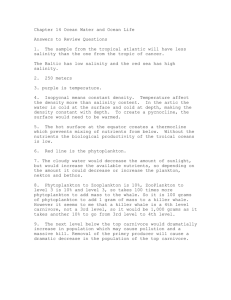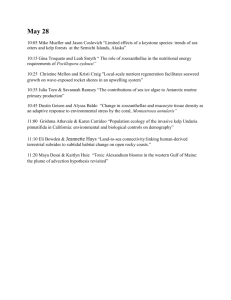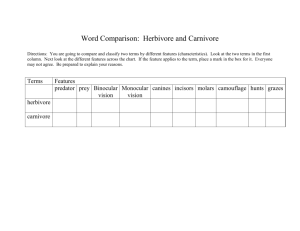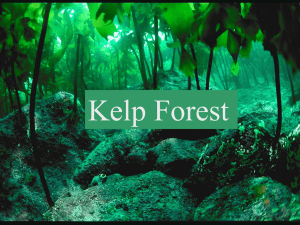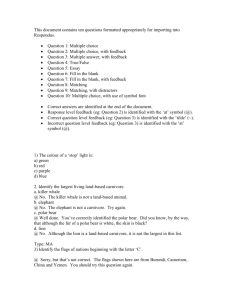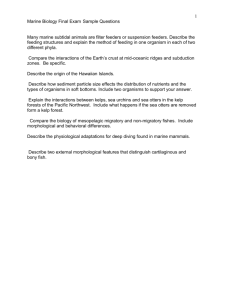What Makes a Stable Food Web? FOR THE TEACHER
advertisement
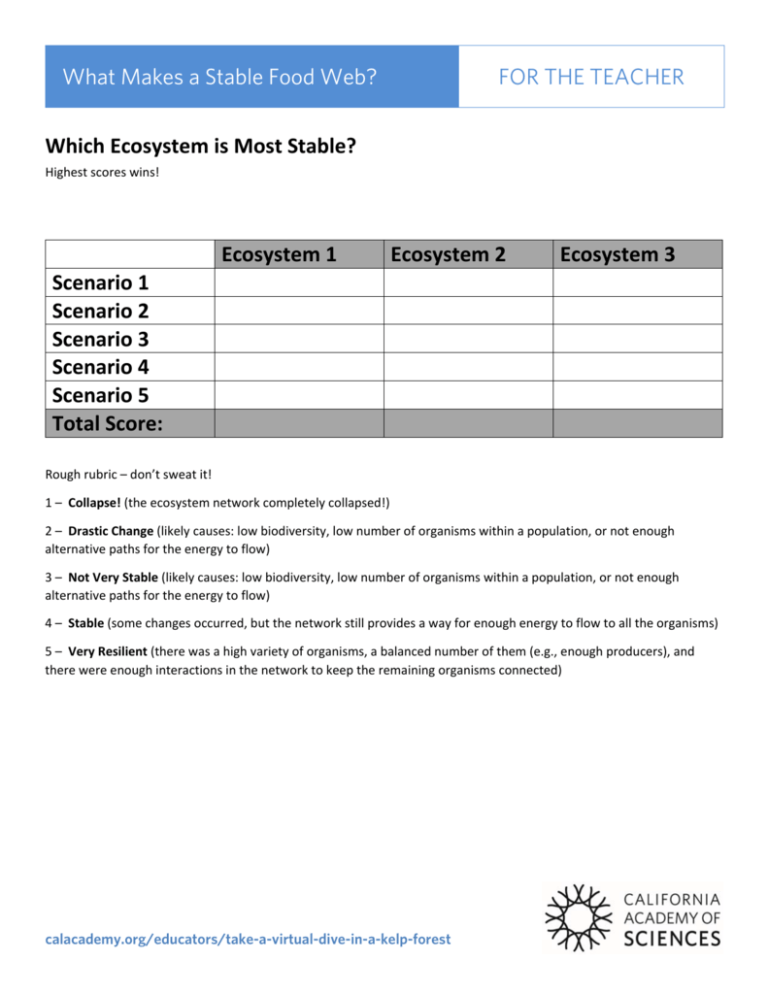
What Makes a Stable Food Web? FOR THE TEACHER Which Ecosystem is Most Stable? Highest scores wins! Scenario 1 Scenario 2 Scenario 3 Scenario 4 Scenario 5 Total Score: Ecosystem 1 Ecosystem 2 Ecosystem 3 Rough rubric – don’t sweat it! 1 – Collapse! (the ecosystem network completely collapsed!) 2 – Drastic Change (likely causes: low biodiversity, low number of organisms within a population, or not enough alternative paths for the energy to flow) 3 – Not Very Stable (likely causes: low biodiversity, low number of organisms within a population, or not enough alternative paths for the energy to flow) 4 – Stable (some changes occurred, but the network still provides a way for enough energy to flow to all the organisms) 5 – Very Resilient (there was a high variety of organisms, a balanced number of them (e.g., enough producers), and there were enough interactions in the network to keep the remaining organisms connected) calacademy.org/educators/take-a-virtual-dive-in-a-kelp-forest What Makes a Stable Food Web? FOR THE TEACHER Scenarios 1 Businesses that harvest kelp to extract an ingredient used in ice cream, toothpaste, and paint, among other things, have harvested the kelp forest aggressively this year. What happens when part of your ecosystems’ forest disappears? Potential Effects: Animals that eat the kelp have to rely on other food sources. Animals that need to live in the kelp will have to find other homes (barnacle, abalone, big fish, limpet, crab, snail, shrimp, sea otter) 2 There’s been an oil spill, which kills off most of the sea otters. Because of this, with no predator to eat purple sea urchins, the population of urchins has exploded! They mow down the kelp forest… Potential Effects: The population of urchins has exploded. Same affects as kelp forest over‐harvesting. 3 A disease has infected the local sea lion population. They become sick, and their population declines. Potential Effects: The populations of small and big fish go up! Sharks and orcas have to hunt for smaller food. 4 El Niño weather brought a huge storm off the coast! Sand ran into the rocky tidepools to bury animals that live there. Good thing the runoff didn’t make it all the way out to the deeper kelp forest. Potential Effects: Loss of animals that couldn’t move fast enough: sea stars, mussels, rock snails, barnacles, and some urchins. 5 After a week with lots of rain, the fertilizer that washed into the ocean from the farms on the California Coast caused a bloom in phytoplankton. When these microscopic creatures die after their short life, their decomposition creates an environment in the water with little oxygen, making it toxic to small bivalves, shrimps, and crabs. Potential Effects: Abalones are particularly susceptible and likely to die off. Some of the kelp itself will also die (resulting in similar domino effect as above). calacademy.org/educators/take-a-virtual-dive-in-a-kelp-forest What Makes a Stable Food Web? FOR THE TEACHER Teacher Cheat Sheet: California Coast Organisms and What They Eat Organism How it obtains energy What it might eat What might eat it abalone herbivore/consumer kelp (other algae) sea otter baleen whale carnivore/consumer zooplankton (krill) shark barnacle omnivore/decomposer/consumer phytoplankton, zooplankton (detritus) rock snail, sea star, crab big fish / salmon carnivore/consumer anchovy, shrimp toothed whale, seal clam herbivore/consumer/decomposer Phytoplankton (detritus) crab, sea bird, otter, octopus crab carnivore/decomposer/consumer barnacle, shrimp, clams, limpets octopus, seals kelp producer sunlight and co2 abalone, sea urchin limpet herbivore /consumer kelp (other algae) crab, sea bird mussel herbivore/decomposer/consumer Phytoplankton (detritus) octopus carnivore/consumer crab, anchovy, shrimp toothed whale phytoplankton producer sunlight and co2 zooplankton, limpet, clam rock snail carnivore/consumer mussel, barnacle sea bird carnivore/consumer anchovy, shrimp, chiton, limpet, clam, mussel sea otter carnivore/consumer sea urchin, abalone, clam shark sea star carnivore/consumer mussel, limpet, barnacles (other snails) sea urchin herbivore/consumer kelp sea otter seal carnivore/consumer anchovy, salmon (other fish), crabs shark shark carnivore/consumer seal, whale, sea otter shrimp omnivore/consumer copepod (algae and fish) bird, anchovy, octopus, crab small fish /anchovy carnivore/consumer zooplankton, (chiton) octopus, salmon, bird, squid, toothed whale squid carnivore/consumer shrimp, crab, anchovy toothed whale toothed whale carnivore/consumer anchovy, salmon, squid, seal zooplankton herbivore/consumer phytoplankton anchovy, baleen whale, crab, shrimp calacademy.org/educators/take-a-virtual-dive-in-a-kelp-forest What Makes a Stable Food Web? FOR THE TEACHER Note: Food sources listed in parentheses are not included as their own cards in the activity. Sample food chains: ‐‐ kelp – sea urchin – sea otter – shark ‐‐ kelp – abalone – octopus ‐‐ phytoplankton – krill – baleen whale ‐‐ phytoplankton – limpet – anchovy – squid ‐‐ zooplankton– anchovy – salmon – seal ‐‐ phytoplankton – clam – sea otter calacademy.org/educators/take-a-virtual-dive-in-a-kelp-forest
